Hyde Park Overnight
While scouring the map a reasonable distance from our condo, Jim ran across Hyde Park, NY. President Franklin D. Roosevelt immediately came to mind, and he read that FDR’s home, Presidential Library and Museum are all on one estate.
Not far away is Eleanor Roosevelt’s retreat and one (of many) Vanderbilt Mansions. We set our sights on Hyde Park to brush up on our history, and to find out how a Vanderbilt Mansion came to be considered a National Historic Site.
Click on the first photo in each group and scroll to see the square photos at full size.
To start at the beginning of this series, visit Bay State Getaway 2022.
I Love it when a Plan comes Together!
We tend to take our time at museums – especially Jim, and especially during the timeframe of FDR’s presidency. We knew one day would never be enough to cover all of the sites in this historic town, and that we’d rather not make another three-hour round trip a few days later. When we discovered a sunset music cruise on the Hudson River in Kingston, we decided a Kingston overnight would allow two days of sightseeing with a nice dinner and a little fun in between.
Home of FDR National Historic Site
Birthplace, Home and Final Resting Place
Whenever there’s a tour available we take it, because the information that most tour guides have in their brains is amazing to me. Plus, the stories they tell are just so interesting, and I’m much more likely to remember things that I’ve heard out loud. We left Hancock quite early this morning for our forty-minute tour of FDR’s (whole-life) home.
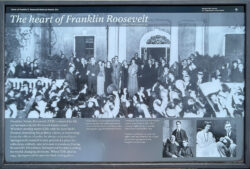 “The house today is dramatically different from the farmhouse FDR’s father purchased in 1867.”
“The house today is dramatically different from the farmhouse FDR’s father purchased in 1867.”
“Whether starting married life with his new bride Eleanor, launching his political career, or recovering from the effects of polio, he always returned here.” ~ Click on the signs to READ MORE.
The original house (above) was built around 1793. A significant renovation in 1916 transformed it into the Colonial Revival style that it is today, putting it more in line with the designs of other mansions in the Hudson Valley during that time period. It had plenty of room for a growing family and also created a more formal and stylish residence that reflected FDR’s political aspirations.
Beautiful, Yet not Pretentious
Although there’s no doubt that this is a sizable estate, it looks very livable – warm and homey, with plenty of family photos and heirlooms perfectly placed.
Three Bedrooms of Significance
From signs outside each room: (1) The Blue Room. The 32nd President of the United States was born in this room on January 30, 1882. (2) FDR had this room from the time he was a boy until he married. His children had bedrooms and a playroom on the third floor of the house. (3) Chintz Room. Queen Elizabeth (the Queen Mother, not Elizabeth II who recently passed) used this room during her visit in 1939. The beds were made at the furniture factory Eleanor Roosevelt established at Val-Kill.
Oh What A View!
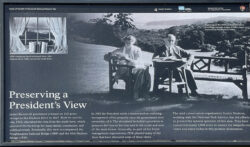 < “James Roosevelt… and his son, FDR, cherished the vista from the south lawn, which provided the backdrop for many family, community, and political events… In 1943 the President wrote a memorandum outlining management of his property once the government took ownership of it.” ~ Click on the sign to READ MORE
< “James Roosevelt… and his son, FDR, cherished the vista from the south lawn, which provided the backdrop for many family, community, and political events… In 1943 the President wrote a memorandum outlining management of his property once the government took ownership of it.” ~ Click on the sign to READ MORE
The sign goes on to say that some of the trees that FDR had planted have gotten large enough to block the view of the Hudson River. In my opinion there’s certainly nothing wrong with a view of thousands of mature trees instead – especially in Autumn. I’ll bet that Franklin and Eleanor would agree.
Henry A. Wallace Visitor and Educational Center
 < This great photo of FDR and Eleanor hangs outside the Milstein Auditorium.
< This great photo of FDR and Eleanor hangs outside the Milstein Auditorium.
After our tour of Springwood, we returned to the Visitor Center to watch a short orientation film at the Milstein Auditorium and grab some lunch. Rendezvous with History was fantastic and featured an overview of FDR’s presidency with interviews and historic footage.
As with most visitor center venues, lunch at Uncle Sam’s Canteen was spendy, but definitely convenient and quite tasty. In the center of the Wallace Center lobby is a mosaic floor map created from a book by Hudson Valley artist Olin Dows, Franklin Roosevelt at Hyde Park. It shows all of Franklin’s favorite places in the Hudson Valley and just a portion is shown below. A life-sized sculpture of Franklin and Eleanor relaxing in the Courtyard is based on a photo from 1933.
Our Nations First Presidential Library
“When FDR proposed the idea of building a library to house his papers and memorabilia, detractors believed he was simply interested in constructing a monument to himself. Roosevelt, however, viewed the library as a solution to two problems – how to simultaneously preserve and provide public access to the records of his presidency. His was an attitude of “open government,” believing that the people of the United States were entitled to a better look at how their government was working, even at the executive level.” ~ READ MORE
“During his second term in office, FDR (on the advice of noted historians and scholars), established a public repository to preserve the evidence of the Presidency for future generations. Beginning a tradition that continues to this day, he raised private funds for the new facility and then turned it over to the United States government for operation through the National Archives.” ~ READ MORE
The first photo below: “The most historic space in the Presidential Library and Museum is FDR’s private study. This is the President’s actual office, not a recreation. The Roosevelt Library is the only Presidential library ever used by a sitting president. When it opened to the public in June 1941, FDR was beginning his third term. He used this study as a place to conduct government business, receive visitors, and work with his books and papers during his many visits to Hyde Park (totaling over 250 days) during World War II. He also made several of his famous radio speeches – or “Fireside Chats” from this room.”
Desperate Times Call for Desperate Measures
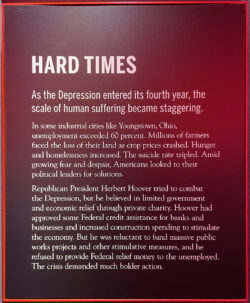 Herbert Hoover became president in 1929 – during a period of widespread economic stability. During his first year in office the stock market crashed and the Great Depression was soon to follow. When FDR became president in 1933, he knew that something had to be done, and FAST. “Take a method,” he said, “and try it. If it fails, try another. But above all, do something!”
Herbert Hoover became president in 1929 – during a period of widespread economic stability. During his first year in office the stock market crashed and the Great Depression was soon to follow. When FDR became president in 1933, he knew that something had to be done, and FAST. “Take a method,” he said, “and try it. If it fails, try another. But above all, do something!”
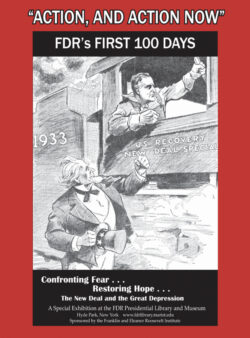 The New Deal
The New Deal
“Supported by healthy Democratic majorities in Congress, FDR pushed through a dazzling array of programs (many of them best known by their initials) in his first 100 days in office. They included: the Emergency Banking Act, Civilian Conservation Corps (CCC), Federal Emergency Relief Act (FERA), Civic Works Administration (CWA), Agricultural Adjustment Act (AAA), Homeowners Loan Act, Tennessee Valley Authority Act (TVA), Truth in Securities Act, Glass-Stegall Banking Act, National Industrial Recovery Act (NIRA), and the Works Projects Administration (WPA).
He Certainly Did Something!
In 1935 Roosevelt added to his alphabet soup of programs by getting Congress to pass the Social Security Act, which began a sweeping federal system of unemployment insurance and retirement pensions paid for by both employers and employees through payroll taxes. In 1938, he signed the Fair Labor Standards Act, which created a national minimum wage of 25 cents per hour and a maximum workweek of 44 hours.
By the time the 1936 elections rolled around, things were looking up… Despite Republican predictions that the Democrats were creating a socialist state, FDR was easily reelected.” ~ READ MORE
First Lady of the World!
When we came upon Eleanor Roosevelt’s section of the Museum, I was amazed by the things I did not know about this amazing woman!
“Eleanor Roosevelt informed the nation that they should not expect their new first lady to be a symbol of elegance, but rather “plain, ordinary Mrs. Roosevelt.” Despite this disclaimer, she showed herself to be an extraordinary First Lady.
Mrs. Roosevelt became the first First Lady to hold her own press conference. In an attempt to afford equal time to women – who were traditionally barred from presidential press conferences – she allowed only female reporters to attend. In 1939, the DAR refused to allow Marion Anderson, an African American singer, to perform in their auditorium. In protest, Mrs. Roosevelt resigned her membership in the DAR.
The President’s Eyes, Ears and Legs
Throughout FDR’s presidency, Eleanor traveled extensively around the nation, visiting relief projects, surveying working and living conditions, and then reporting her observations to the President. She was called “the President’s eyes, ears and legs” and provided objective information to her husband. When the Japanese attacked Pearl Harbor and the United States entered WWII, Mrs. Roosevelt made certain that the President did not abandon the goals he had put forth in the New Deal. She also exercised her own political and social influence.
She became an advocate of the rights and needs of the poor, of minorities, and of the disadvantaged. The public was drawn in by the First Lady’s exploits and adventures which she recounted in her daily syndicated column, “My Day”. She began writing the column in 1935 and continued until her death in 1962.
During the war, she served as Assistant Director of Civilian Defense from 1941 to 1942 and she visited England and the South Pacific to foster good will among the Allies and to boost the morale of U.S. servicemen overseas.” ~ READ MORE
Freedom Court
Busts of FDR and Winston Churchill flank the entrance to Freedom Court, out behind the Presidential Library. The courtyard is a celebration of the shared dreams of these two men – a future where democracy and freedom can flourish.
The sculpture at the center of the court called BreakFree, was created from sections of the Berlin Wall by Winston Churchill’s granddaughter. Artist Edwina Sandys created human figures who are breaking free of symbolic barbed wire. BreakFree embodies the noble principles championed by FDR and Churchill.
“In his Annual Message to Congress (State of the Union Address) on January 6, 1941, Franklin Roosevelt presented his reasons for American involvement, making the case for continued aid to Great Britain and greater production of war industries at home. In helping Britain, President Roosevelt stated, the United States was fighting for the universal freedoms that all people possessed.” ~ READ MORE about the Four Freedoms Speech
The Rose Garden
What visit to a mansion would be complete without some flowers, especially with a beautiful red Coach House for a backdrop! The Coach House and Stables were built by FDR’s father in 1886.
“Today, the focal point of the garden is the grave marker of Franklin and Eleanor Roosevelt within the central lawn, an unadorned Vermont white marble block designed by FDR and placed according to his wishes in October 1945. The marker is simply inscribed with names and life dates of the Roosevelts and is surrounded by an herbaceous border. Rectangular beds of common periwinkle mark Franklin and Eleanor’s graves just south of the stone. The central lawn also includes a sundial on pedestal, marking the graves of the Roosevelts’ beloved dogs Fala and Chief.” ~ READ MORE
A Wonderful Evening after a Wonderful Day
All-in-all, we spent SIX hours at the first of five historic sites at Hyde Park. If you would’ve told me years ago how much I would enjoy this place I never would have believed you, but today I left feeling inspired and wishing the Roosevelts could return to office.
We checked in at our Airbnb in Kingston and after a short rest, we headed down to the marina to find our Hudson River Sunset Music Cruise. We also found a great restaurant right next to the departure point, so we jumped on that! Mariner’s Harbor had quite an assortment of seafood from which to choose, so we were both happy with our choices (Lobster Roll!)
Our cruise left a little too late to see much of the shoreline before dark and since it was getting a little nippy anyway, we went downstairs pretty quickly for music and a couple of MC2 Equilibriums. The Lost Cowboys provided the entertainment tonight and were excellent, playing a nice assortment of country and southern rock. Being of a certain age, it was a perfect ending to a perfect day.
Another Great Day is Coming Up!
Next up: First Lady of the World
Happy trails,
Barb

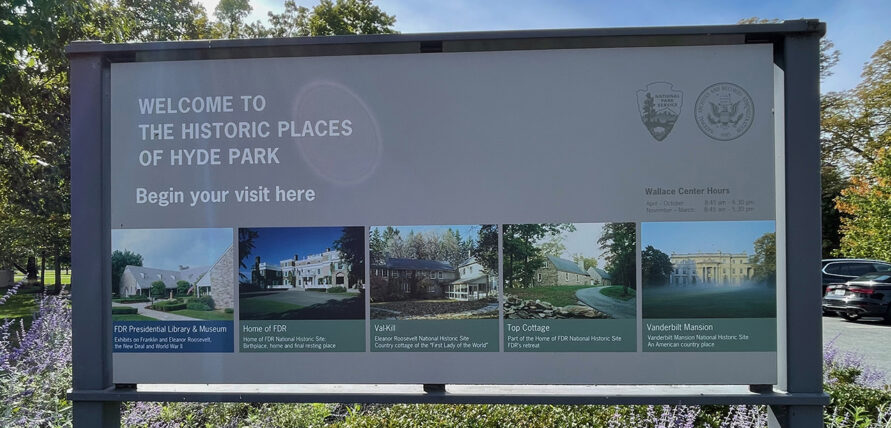
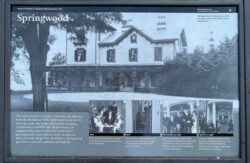


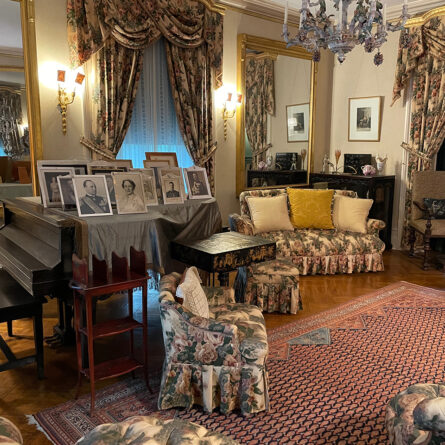
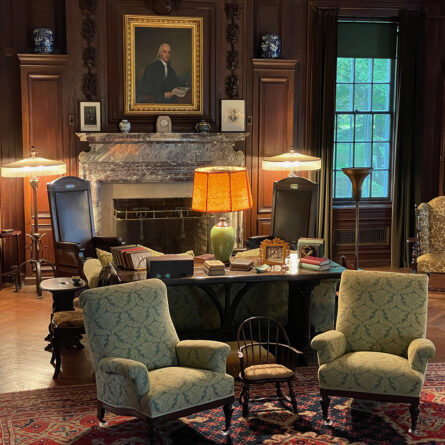
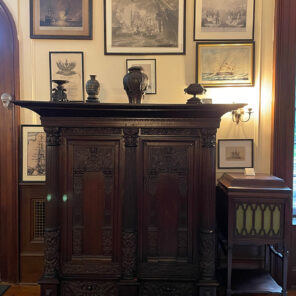
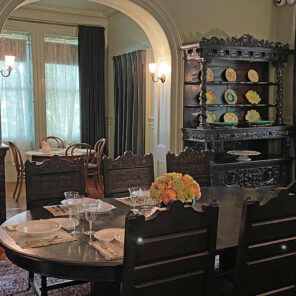
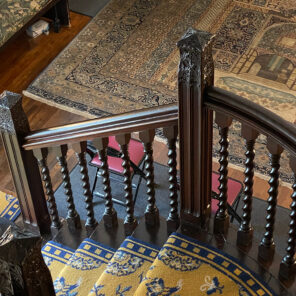

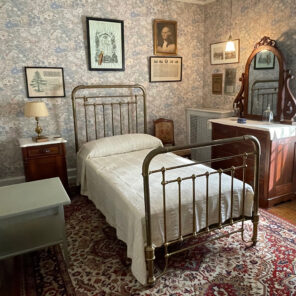
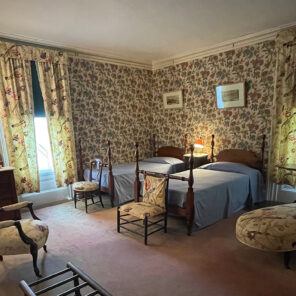
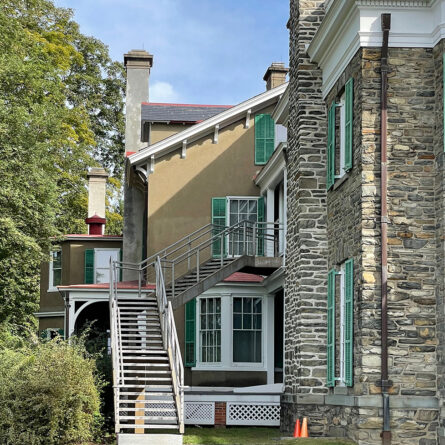
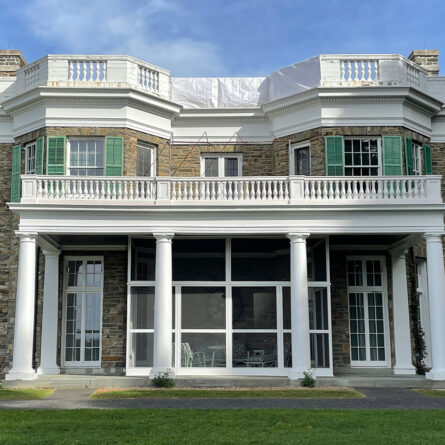
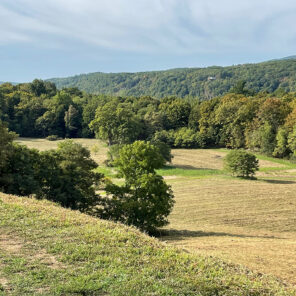
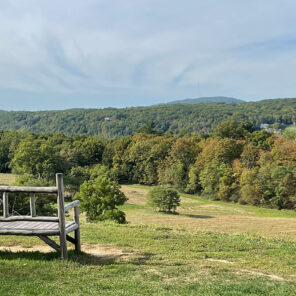

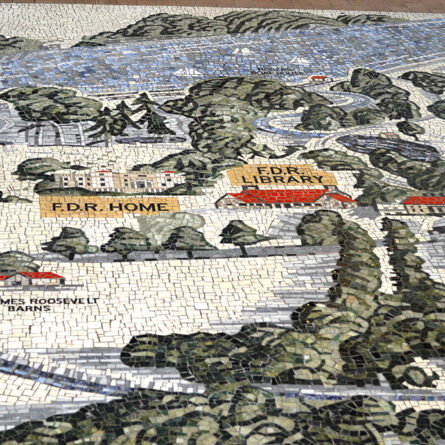
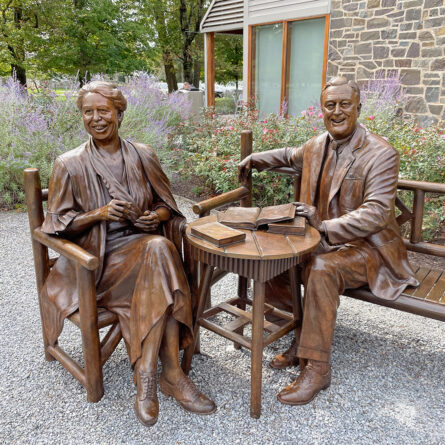
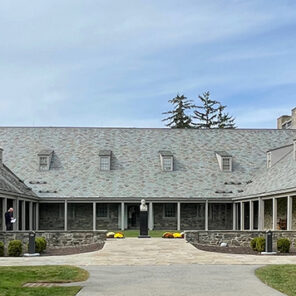
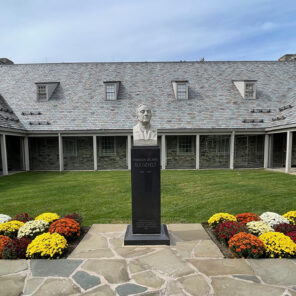
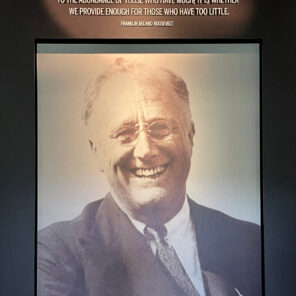
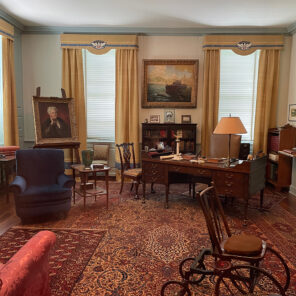
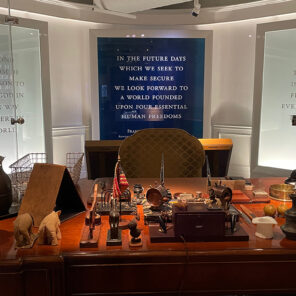
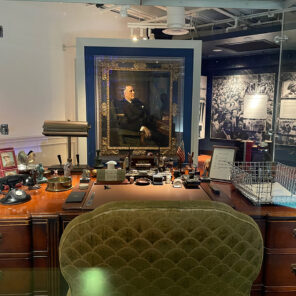
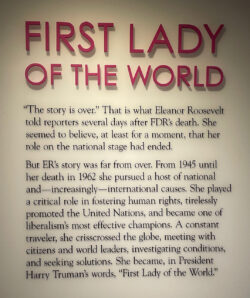
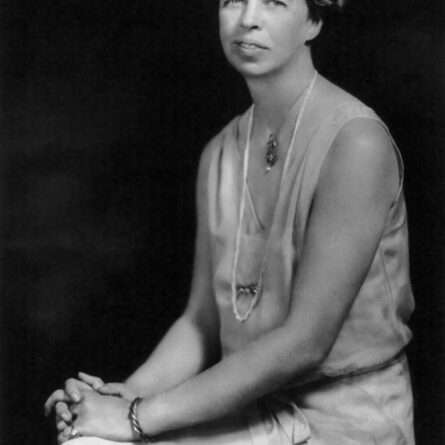
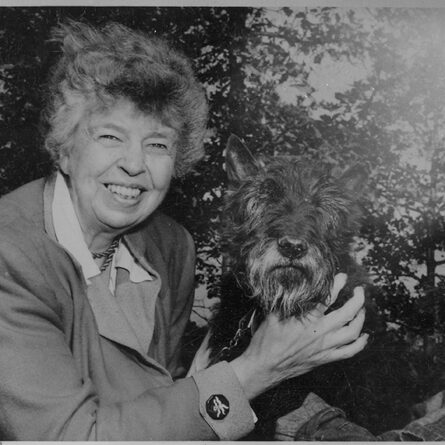
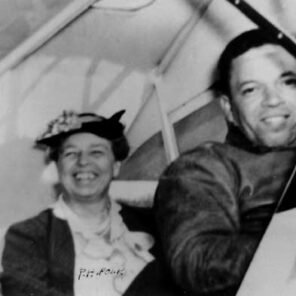
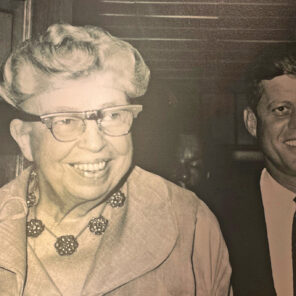
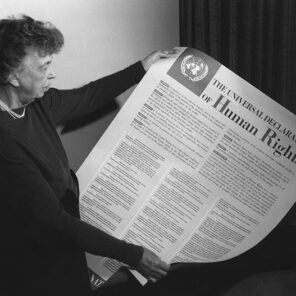
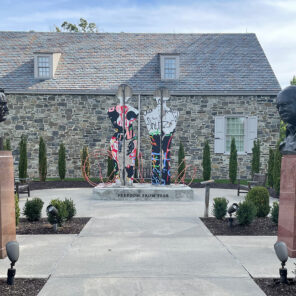
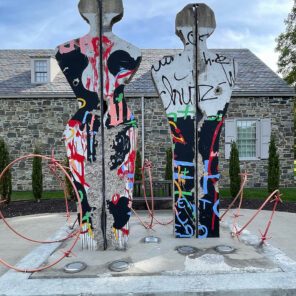
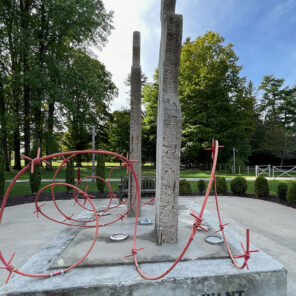
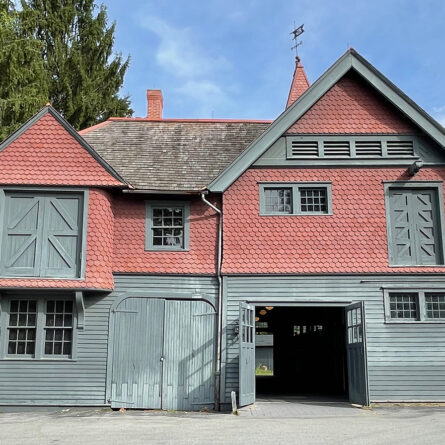
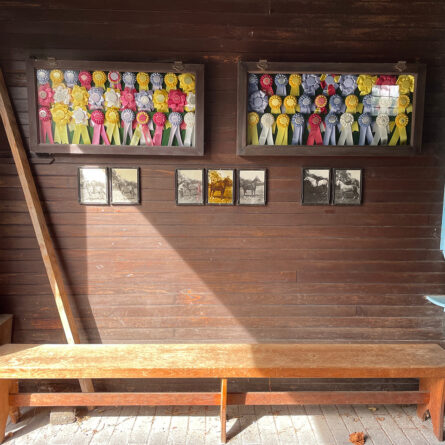



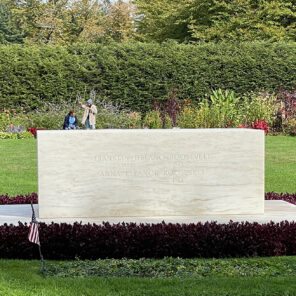
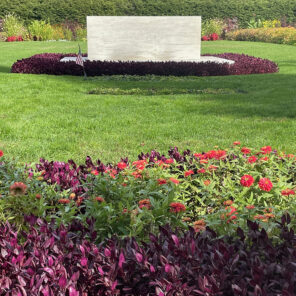
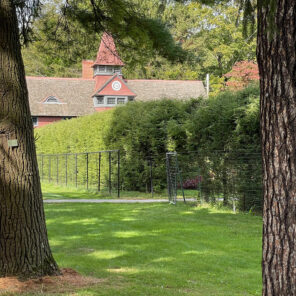
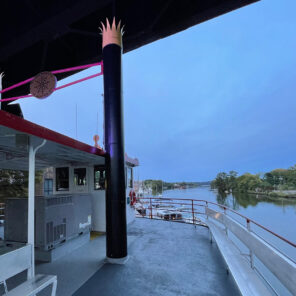
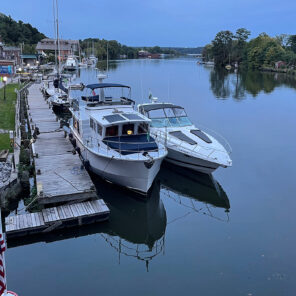
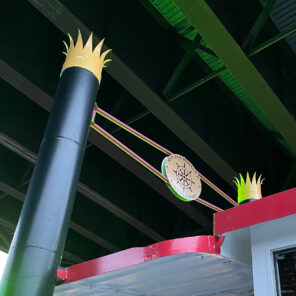
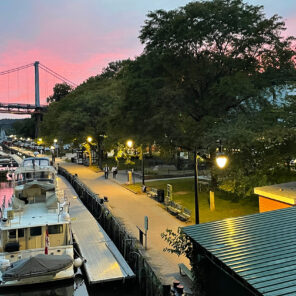
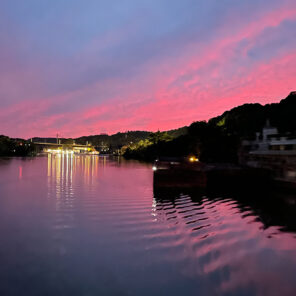







Comments are closed here.